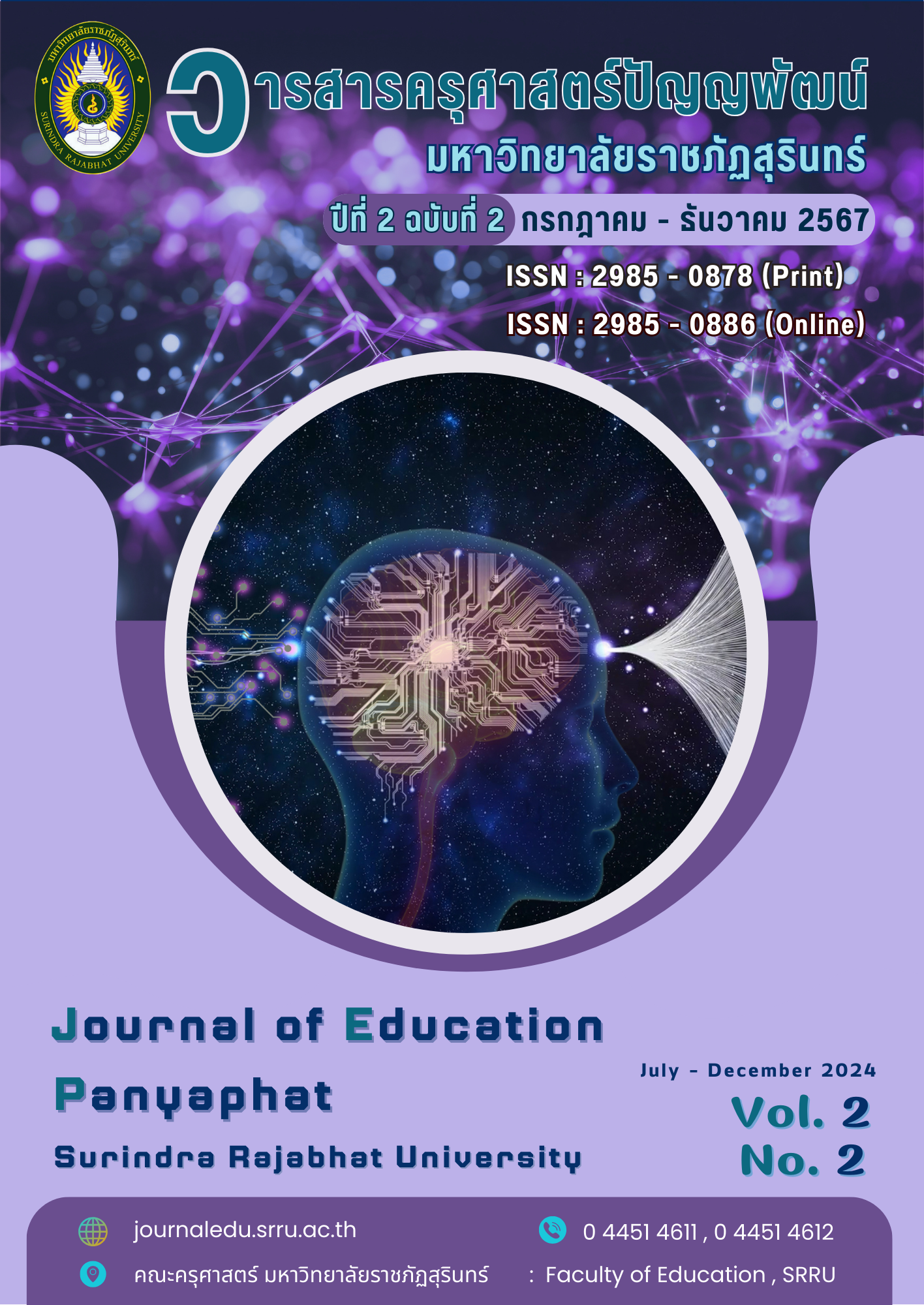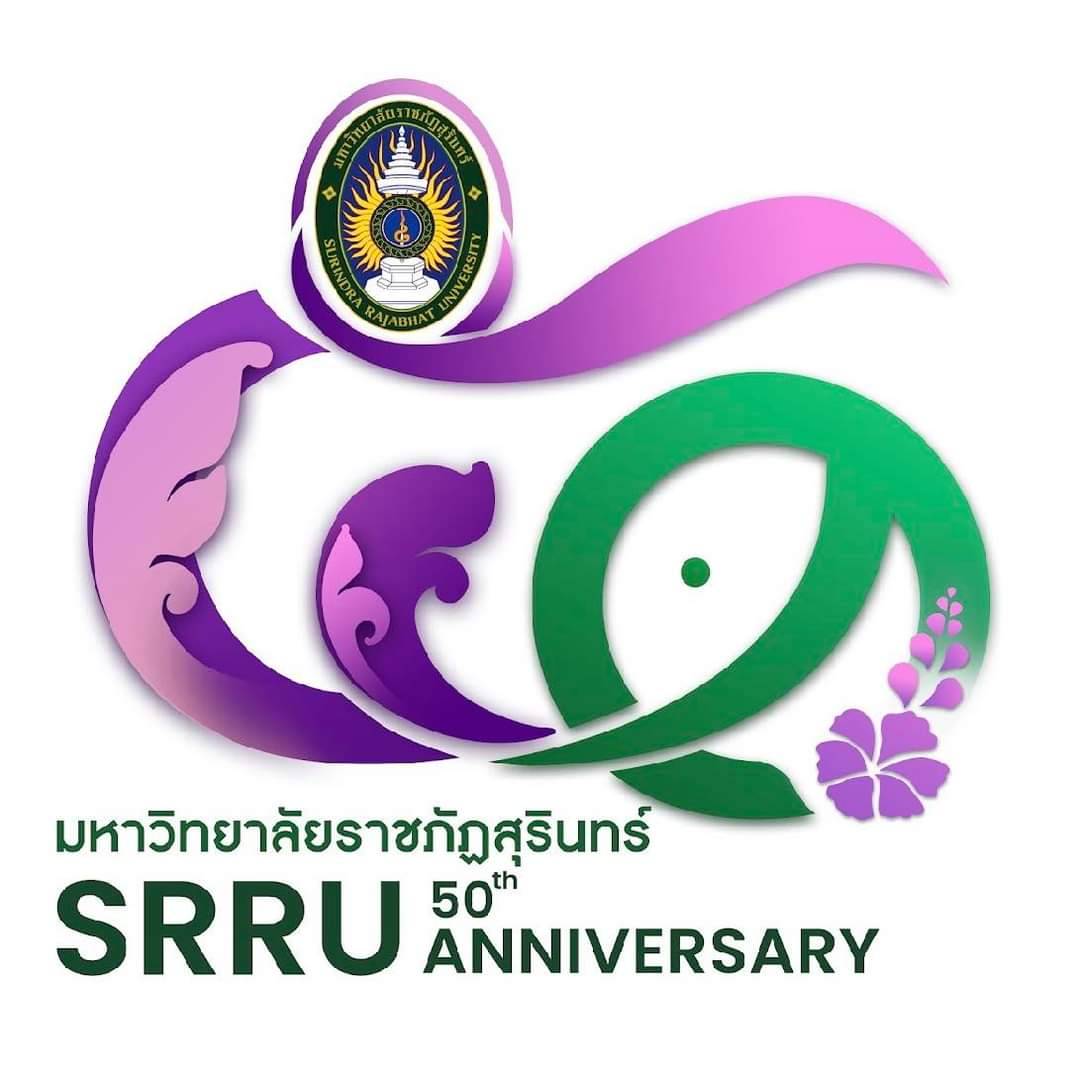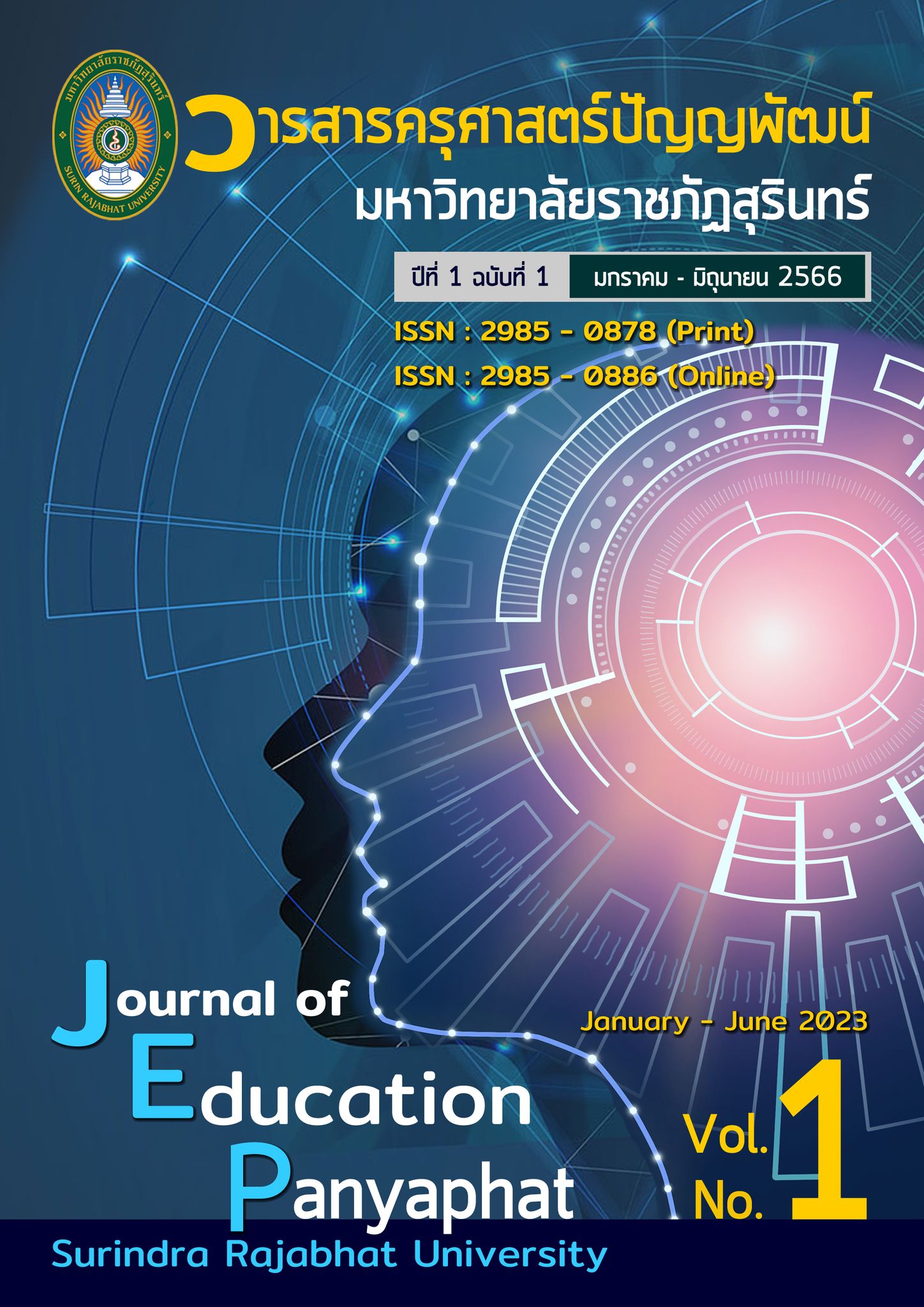The process of developing educational quality towards excellence According to the guidelines for Active Learning Management of Surin Primary Educational Service Area Office 1
Keywords:
Education towards excellence, Active learning management, Active LearningAbstract
This research aims to; To synthesize the process of developing educational quality towards excellence. According to the guidelines for organizing active learning of schools under the Surin Primary Educational Service Area Office, Area 1, in terms of management, teacher development, and raising academic achievement levels Using content analysis (Content Analysis) from best practices ,Vision of schools under the Surin Primary Educational Service Area Office, Area 1, totaling 291 schools, and the study of educational management policies of the Surin Primary Educational Service Area Office, Area 1. The results revealed that; Process for developing educational quality towards excellence According to the guidelines for proactive learning management of schools under the Surin Primary Educational Service Area Office, Area 1, the management aspect consists of 8 steps: Including
1) analysis of problem conditions of every school 2) joint planning of the network 3) network creation/sharing 4) team development 5) implementation 6) evaluation/improvement 7) Group discussion of executives and
8) Appreciation of all parties. It requires the leadership and morality of executives to carry out every step. 2. Process for developing educational quality towards excellence According to the guidelines for proactive learning management of schools under the Surin Primary Educational Service Area Office, District 1, teacher development consists of 8 steps. Including
1) acknowledgment of the policy 2) Planning of teachers and the director
3) appointment of a steering committee/network creation 4) training to create academic leadership and teaching techniques for teachers 5) Action
6) Evaluation 7) Improvement and 8) Reporting/Best Practice It requires the leadership and morality of executives to carry out every step. And must provide morale and encouragement to match teachers' performance. 3. Process for developing educational quality towards excellence According to the guidelines for organizing active learning of schools under the Surin Primary Educational Service Area Office Area 1. In terms of improving achievement, it consists of 8 steps: 1) Assessment of students according to standards according to indicators, every grade, every person. 2) Analysis of individual learners/grades. 3) Meeting with administrators, fellow teachers, parents, and committee members. School 4) Create teaching innovations that emphasize the use of Active Learning along with the use of mixed media. 5) Inspire students and commitment to success 6) Action/repeated training/positive reinforcement 7) Evaluation to develop students in minutes and evaluate everyone and 8) Summarizing the results of Best Practice to share and disseminate success It requires the leadership and morality of executives to carry out every step.
References
กชภัทร์ สงวนเครือ. (2562). โปรแกรมเสริมสร้างสมรรถนะครูในการจัดการเรียนรู้เชิงรุก ตามแนวทางสะเต็มศึกษา สังกัดสำนักงานคณะกรรมการการศึกษาขั้นพื้นฐาน. ดุษฎีนิพนธ์ปรัชญาดุษฎีบัณฑิต, สาขาวิชาการบริหารและพัฒนาการศึกษา, คณะศึกษาศาสตร์, มหาวิทยาลัยมหาสารคาม.
กมล รอดคล้าย (2561, 14 เมษายน). จะยกคุณภาพ..การศึกษา ต้องพัฒนา “ครู”.
เข้าถึงได้จาก https://www.kroobannok.com/84179
ไชยยศ เรืองสุวรรณ. (2553). Active Learning. เชียงใหม่: ข่าวสารวิชาการ ประจำเดือน พฤศจิกายน คณะเภสัชศาสตร์ มหาวิทยาลัยเชียงใหม่.
ณัจยา หนุนภักดี. (2559). ทักษะคนไทยในศตวรรษที่ 21 ความท้าทายในการพัฒนา. วารสารเศรษฐกิจและสังคม, 53(1), 2-12.
บุหงา วัฒนะ. (2561). Active Learning. วารสารวิชาการ, 6(9), 30-34.
ปรียา สมพืช. (2559). การจัดการเรียนรู้เชิงรุกโดยใช้รูปแบบการเรียนการสอนด้วยกรณีศึกษา. มนุษยศาสตร์และสังคมศาสตร์ (มหาวิทยาลัยราชภัฏพระนคร), 11(2), 260-270.
ปรียาพร วงศ์อนุตรโรจน์. (2544). การบริหารงานวิชาการ. กรุงเทพฯ: ศูนย์สื่อเสริม.
พรชัย เจดามาน เผชิญ กิจระการ กลวัชร วังสะอาด และเบญจภัคร จงหมื่นไวย์ (2564, 31 มกราคม) การพัฒนาการบริหารจัดการศึกษา 4.0 ภายใต้พลวัตแห่งศตวรรษที่ 21 สู่การเป็นประชาคมสังคมและวัฒนธรรมอาเซียนอย่างยั่งยืนของการจัดการศึกษาขั้นพื้นฐานไทย. เข้าถึงได้จาก https://www.kroobannok.com/88772
ศักดา ไชยกิจภิญโญ. (2548). สอนอย่างไรให้ Active Learning. วารสารนวัตกรรมการเรียนการสอน, 2(2), 12-15.
สถาบันส่งเสริมการสอนวิทยาศาสตร์และเทคโนโลยี. (2554). ผลการประเมิน PISA 2009 การอ่าน คณิตศาสตร์ และวิทยาศาสตร์. กรุงเทพฯ: อรุณ.
สำนักงานเขตพื้นที่การศึกษาประถมศึกษาสุรินทร์ เขต 1 (2562). แนวทางการจัดการเรียนรู้ แบบ Active Learning. ใน เอกสารประกอบการประชุมปฏิบัติการพัฒนาบุคลากรการนิเทศเพื่อการนิเทศการจัดการเรียนรู้ ด้วยการสังเกตชั้นเรียนและแลกเปลี่ยนเรียนรู้ : Coaching & PLC ปีการศึกษา 2562 สพป.สุรินทร์ เขต 1 (หน้า 29-31). สุรินทร์ : สำนักงานเขตพื้นที่การศึกษาประถมศึกษาสุรินทร์ เขต 1.
สำนักวิชาการและมาตรฐานการศึกษา. (2546). สรุปผลการประชุมวิเคราะห์หลักสูตรการศึกษา ขั้นพื้นฐาน. กรุงเทพฯ: สำนักงานคณะกรรมการการศึกษาขั้นพื้นฐาน กระทรวง ศึกษาธิการ.
เฉลิมพล สุปัญญาบุตร. (2562). การพัฒนาโปรแกรมเสริมสร้างสมรรถนะครูด้านการจัดการเรียนรู้ เชิงรุก สังกัดสำนักงานเขตพื้นที่การศึกษามัธยมศึกษา เขต 24. วิทยานิพนธ์นิพนธ์การศึกษามหาบัณฑิต, สาขาวิชาการบริหารและพัฒนาการศึกษา, คณะศึกษาศาสตร์, มหาวิทยาลัยมหาสารคาม.
Kvam, P.H. (2000). The Effect of Active Learning Methods on Student Retention in Engineering Statistics. The American Statistician, 54(2), 136-140.
Wilke, R.R. (2003). The effect of active learning on student characteristics in a human physiology course for no majors. Advances in Physiology Education, 27(4), 207-223
Downloads
Published
Issue
Section
License
Copyright (c) 2024 JOURNAL OF EDUCATION PANYAPHAT SURINDRA RAJABHAT UNIVERSITY

This work is licensed under a Creative Commons Attribution-NonCommercial-NoDerivatives 4.0 International License.
ข้อความลิขสิทธิ์








